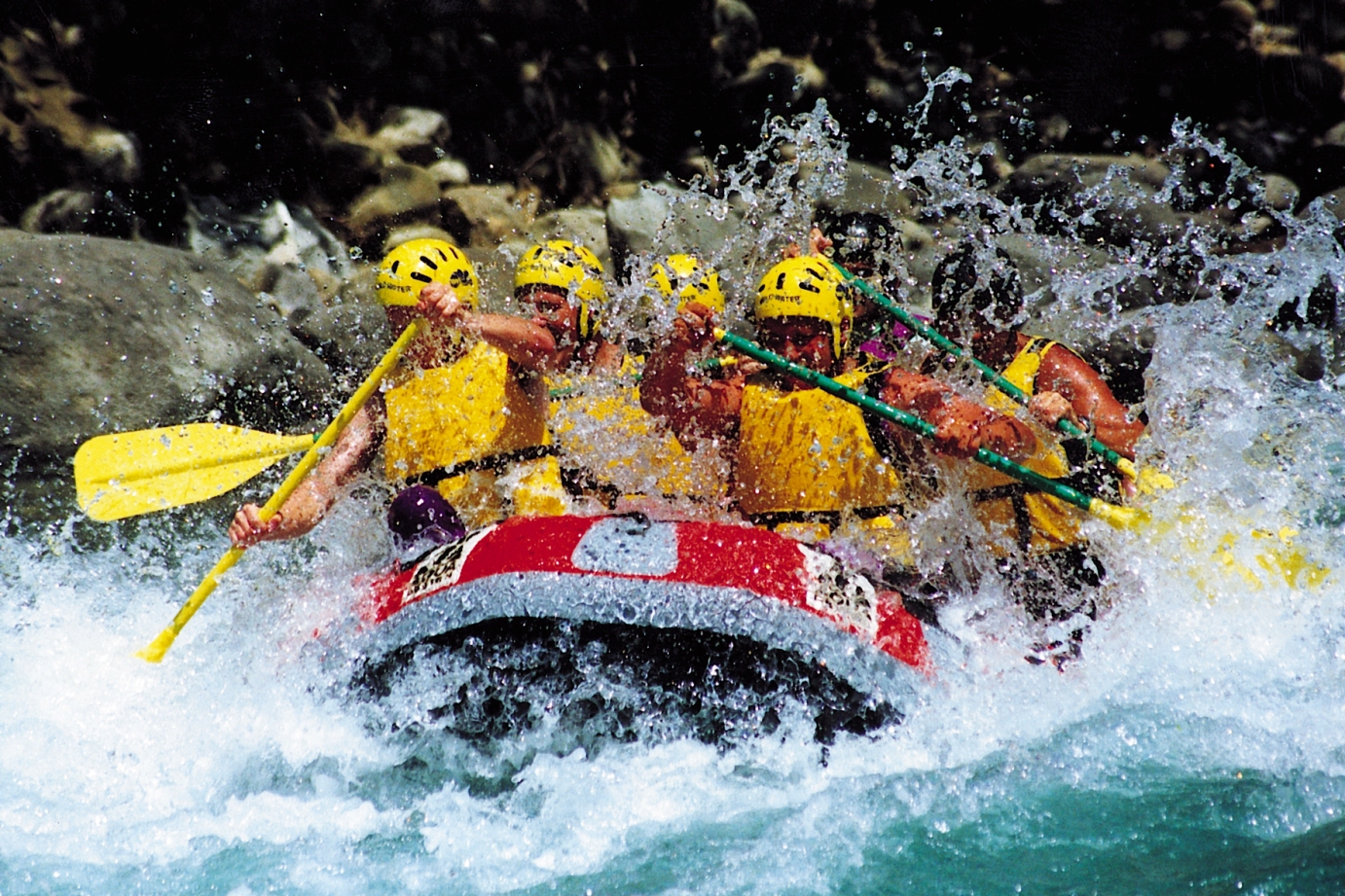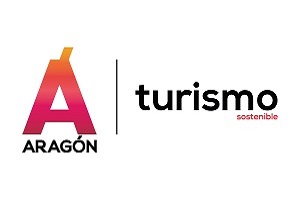From the white ski resorts that dot the Aragonese Pyrenees in winter, to the white waters of the rivers that bathe the Altoaragón. The province of Huesca has become in the last decades a reference in active tourism, with different proposals perfect for the winter, but also for when the sun rays appear and the heat invites to cool down.
All in a province that has much to offer tourists in other areas, such as gastronomy, culture and even astro-tourism, thanks to the very low light pollution and good quality skies for observing the firmament.
But before looking at the stars, we begin a tour of Huesca in the rivers, which will also pass through its snowy peaks, its trails and even its sky.
In the Pyrenees are born rivers such as the Aragon, one of the main tributaries of the Ebro; the Cinca, in the National Park of Ordesa and Monte Perdido, or the Gallego, bathed by numerous ravines.
This fluvial richness makes water adventure sports, also in reservoirs, one of the most powerful alternatives in terms of adventure tourism in Huesca. Therefore, there are several specialized companies that we can find in this area, such as Kayak Campo, Nómadas del Pirineo or Eseraventura.
1. Kayaking, an option for navigating in calm waters
The Mediano reservoir, in Sobrarbe, or the Barasona reservoir, in Ribagorza, are some of the places where you can practice kayaking in calm waters. Some companies also offer routes on the Ésera or Cinca rivers.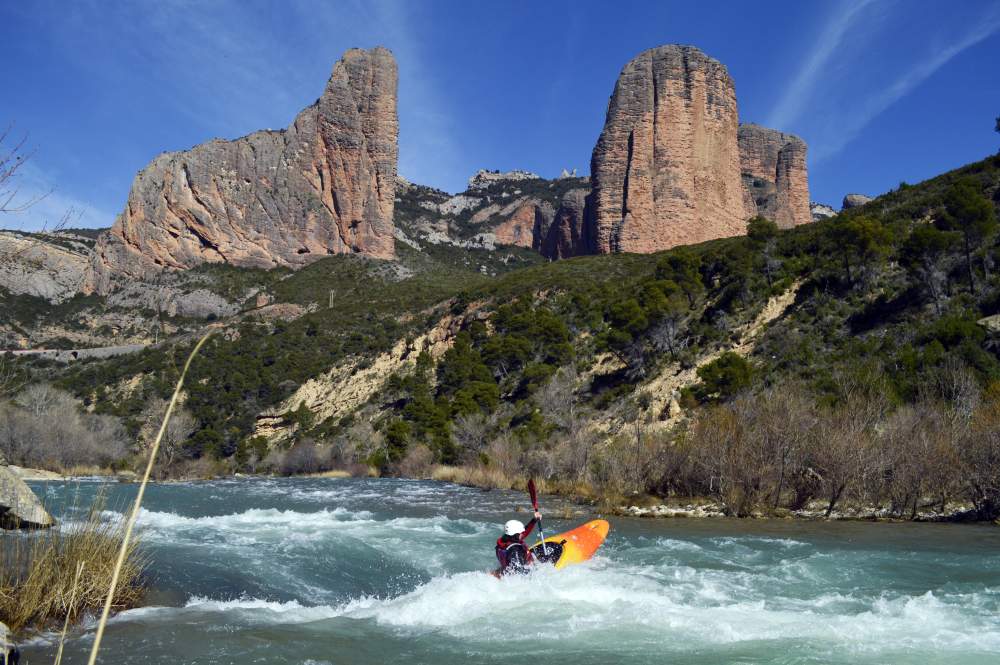
2. Canyoning, a king sport
If there is a king adventure sport in the Pyrenees and in the Sierra de Guara, it is canyoning, which is practiced in canyons or river ravines. In this area there are numerous companies that organize these canyoning descents in areas such as Ordesa, Bielsa, Boltaña, Ainsa or Torla. One of the attractions of this sport is that in the course of the canyon there are jumps, down slides, sometimes some parts swimming and, of course, rappel descents.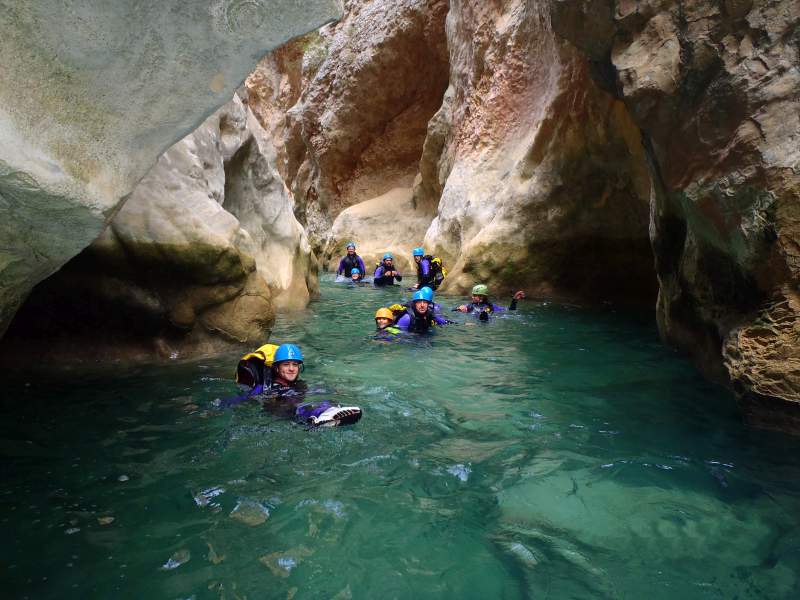
3. Rafting: slides, waterfalls and lots of fun.
Rafting is already very popular among the adventure activities in the province of Huesca. A “shot of adrenaline” that consists of descending a river following the current aboard a raft and that is carried out with specialized companies, which provide the adventurers with all the necessary material and indications. In the province of Huesca, two of the most common sites for rafting are the Ésera and Aragón rivers.
One of the main attractions of this sport is that it is done in groups, with friends or family, with some routes suitable for children.
IN THE PYRENEAN VALLEYS WITH SKI RESORTS, SNOW IS THE MAIN ECONOMIC ENGINE.
Its resorts provide work during the winter season for some 1,300 people, a figure that is multiplied by almost 10 if we take into account indirect employment.
4. Alpine and cross-country skiing
There are 6 alpine ski resorts in Aragon: 4 in Huesca and 2 in Teruel. If we zoom in on the ski resorts in Huesca, we find: Candanchú, Astún, Formigal-Panticosa (both are part of one) and Cerler. This varied offer attracts thousands of Aragonese, national and French tourists every winter, who see in the Pyrenees not only the ideal place to practice their favorite sport, but also to enjoy the gastronomy of the area, the nightlife and the natural environment that surrounds these resorts. In addition, cross-country skiing is practiced in resorts such as Linza, Llanos del Hospital, Oza-Gabardito and Pineta.
But the attractions of these valleys are not limited to the snow season. In this article we offer you a series of plans to do in summer on Aragonese ski slopes, so that you can continue to enjoy the ski lift routes or the highest tourist train in Europe when the snow disappears: the Artouste train.
5. Snowshoes for walking on snow
Another option to move through the snow and enjoy the scenery are snowshoes, utensils that are attached to the boots. This kind of snowshoeing is a very common practice in the Huesca Pyrenees in winter, because it does not involve the difficulty of other snow sports such as skiing or snowboarding. However, for those who do not know the area or are new to snowshoeing, it is advisable to have a mountain guide to accompany the group on their journey. In this sense, there are many companies that provide this service.
For example, the Espacio Nórdico de Pineta offers the possibility of snowshoeing in the area for groups of children, adults or more experienced sportsmen and women, capable of making ascents. Depending on the conditions of the mountain and the level of the group, it is possible to reach the Comodoto peak or the Pic Aiguillette, to enjoy magnificent views of the valley.
The circular route to the O Forato spur, the return to the Panticosa Spa or the Ibón de Piedrafita are other places suitable for snowshoeing, as this article from Travesía Pirenaica shows.
IN ADDITION, MOUNTAIN LOVERS CAN ENJOY A RANGE OF ADVENTURE SPORTS ALL YEAR ROUND: FROM CLIMBING TO NORDIC WALKING OR CAVING, TO DISCOVER THE SECRETS OF THE PYRENEAN CAVES.
6. Climbing for the most experienced climbers
The imposing Mallos de Riglos, in the Pre-Pyrenees of Huesca, are one of the privileged places for Aragonese climbers and for those who visit us to practice this sport. In fact, they are well known among climbers from all over Europe. But, as this article from Huesca La Magia explains about climbing spots in the province, other emblematic places are Vadillo, with the Natural Park of the Sierra and Canyons of Guara as a backdrop, or the Congosto de Olvena, in the Somontano de Barbastro region.
7. Vias ferratas: an increasingly popular alternative
Although this sport also runs along rocky walls, it is not as demanding as climbing and allows you to use artificial elements (such as steps, handrails, bridges or pegs) in the progression. Even so, it is necessary to have a good physical preparation and it is advisable to be trained in mountain climbing or to be accompanied by a professional. For example, in Hoya de Huesca you can find six via ferratas: Canal del Palomo, Peña de San Miguel, Peña Amán, Peña Ruaba and Riglos. Other famous via ferratas in Huesca are Peñas Juntas (Bierge), Castellaso (Sesué) or Santa Elena (Hoz de Jaca).
8. Nordic walking with poles
Nordic walking has been gaining popularity in Aragon in recent years for the benefits provided by this sport, which allows us to work much of the muscles of the body at a lively pace and with the momentum provided by the characteristic poles of this activity.
Aware of the appeal of this activity, for which you only need poles and shoes, tourism in the region of Somontano de Barbastro has prepared some guides of ‘Nordic walking’ in the area of Guara Somontano that include visits to places such as the Hermitage of Santa Agueda, the Famillosa Bridge or the Muela de Terreu.
9. Hiking: the beauty of Huesca through its trails
A great way to get to know Huesca is through its dense network of trails. In fact, as stated by the Provincial Council of Huesca, in Altoaragón there are more than 5,000 kilometers of marked trails.
Some of the best known and most popular routes among mountaineers and hikers in the Pyrenees are the Ibón de Plan or Basa de la Mora, which allows you to reach a spectacular glacier, the Ibón de Plan; the Cola de Caballo by the path of the hunters, in the National Park of Ordesa and Monte Perdido; and the Llanos de Larri, in the same environment and that allows you to discover waterfalls, a forest of beech forests or pass between the Pineta and Focarral peaks.
10. Huesca by bike: cyclotourism and MTB
Can you imagine cycling around Ordesa, Guara or Loarre Castle? Huesca is also a province to enjoy pedaling, either as cycle touring and family or group activities, or mountain biking, for the more athletic. Here you can find different mountain bike, road and cyclotourism routes, suitable for different types of public.
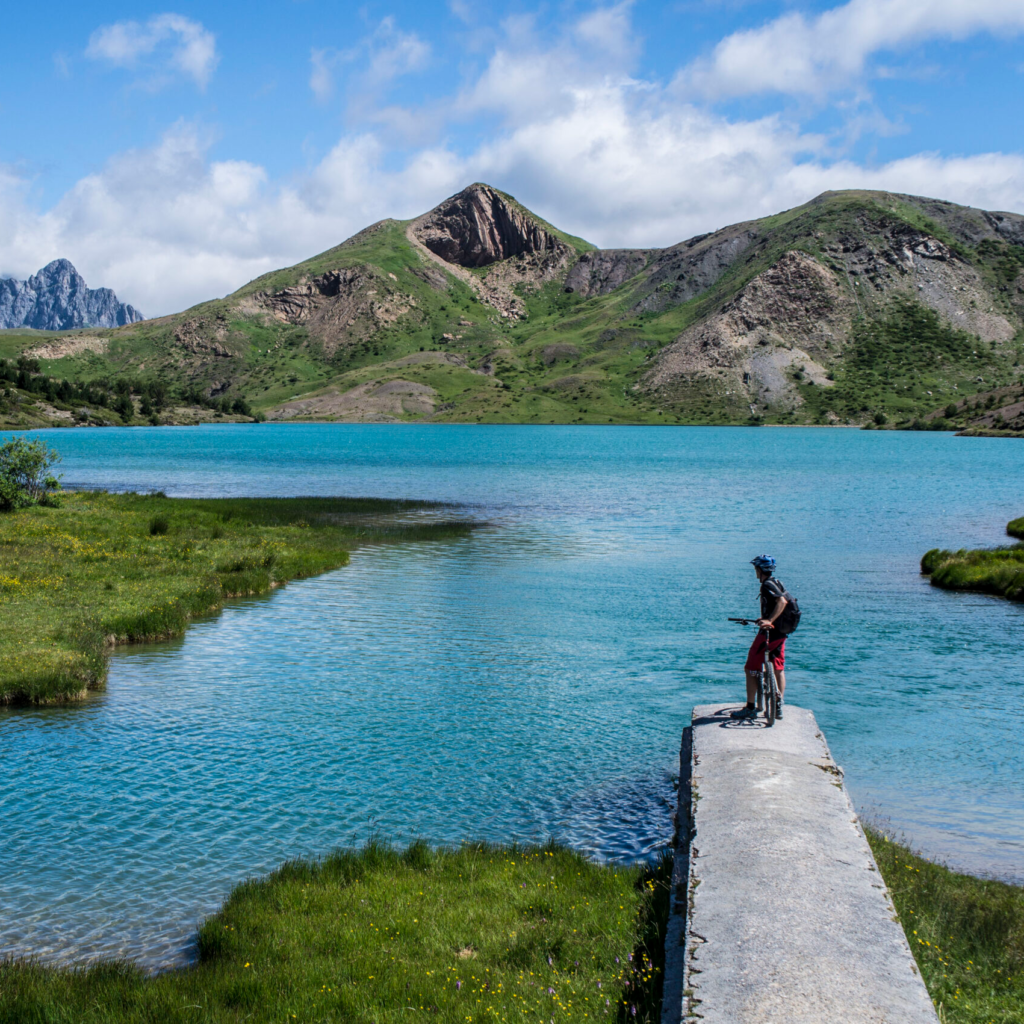
11. Entering caves through caving activities
Entering a cave in the heart of the Pyrenees is another of the possibilities offered by adventure tourism in the area. There are several adventure tourism companies that allow you to get to know the rock formations that the water has been plotting over time with the help of a guide. Excursions that pass between stalactites, stalagmites, columns, streamlets and streams, in many cases, suitable for families.

12. Paragliding to fly over valleys, rivers and mountains
Paragliding over the province of Huesca allows you to discover from the sky valleys, mountains, rivers and villages, and, in short, to see the Pyrenees in a very different way. Although this activity is only suitable for the most adventurous, it must be taken into account that you will always be accompanied by a professional pilot, in tandem flights in which you will be told what to do at all times.
One of the most emblematic places to do it is Castejón de Sos, a beautiful enclave of free flight, with a paragliding school in operation since 1990. This activity allows you to fly over the Benasque Valley and the Ésera River, with 1,350 meters of vertical drop, and to cross villages such as Arasán, Liri and Castejón de Sos with the wind in your face.
13. Zipline to know the Aragonese Pyrenees from the sky
Aragon is a land of large-format zip lines. We focus on the two that exist in Huesca, although in a visit to Matarraña adventure tourism lovers will not be able to avoid the Fuentespalda, the longest in Europe.
Tyrolean traverse in the Tena Valley (Hoz de Jaca)
1 kilometer long, 120 meters high and 90 km / h are some of the most interesting facts of this adventurous proposal: the highest and longest double zip line in Europe as indicated on the page of the Tirolina del Valle de Tena. It offers spectacular views, not only during the day, but also at night, since it offers the possibility of a “night flight”.
Ordesa Pyrenees Zip Line (Fiscal)
And, speaking of records, the new Pyrenean zip line, located in Fiscal, is nothing less than the fastest in the world, reaching up to 160 km/h. Located between Jaca and Aínsa, this journey through the heights offers privileged views of the Ordesa and Monte Perdido Park along 2 kilometers and with 400 meters of vertical drop. As indicated on the website of the Ordesa Pirineos Zip Line, it is also the second longest in Europe and offers individual or couple tours, with groups of up to eight people.




